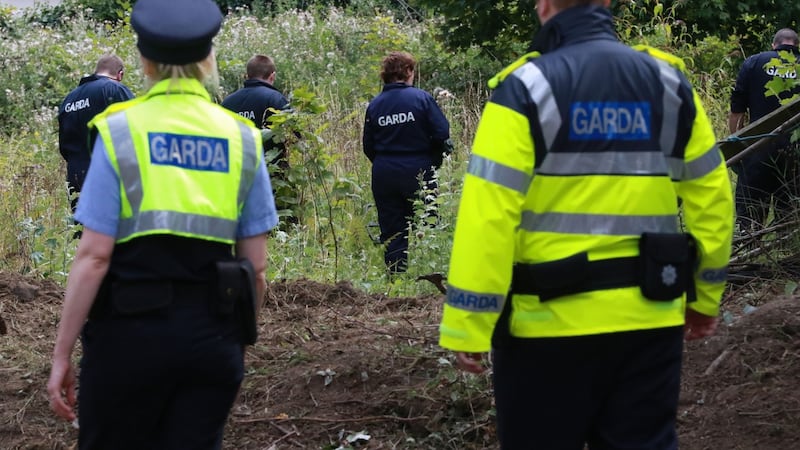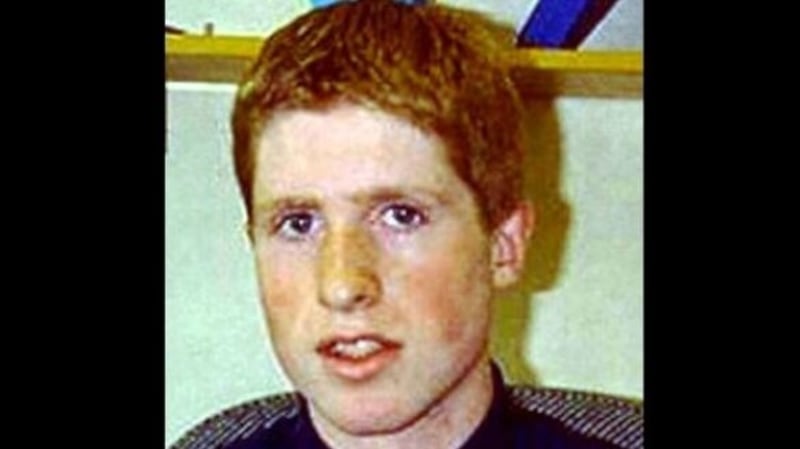Gardaí investigating the disappearance of Trevor Deely 16½ years ago have received intelligence suggesting he was murdered by a known criminal.
The investigating team is also treating as credible information claiming to know the exact spot where Mr Deely’s body is buried.
A piece of waste ground in Dublin was being searched by gardaí this weekend in relation to Mr Deely’s disappearance, after being sealed off.


The Garda has remained tight-lipped about what exactly they are searching for and why they are focused on the three-acre site in Chapelizod.
However, The Irish Times understands the investigation team has been told Mr Deely’s body is buried there.
Gardaí are also examining intelligence that suggests that Mr Deely, who vanished on his way home from an office party in the early hours of December 8th, 2000, was killed by a criminal well known to the Garda.
That man, and others close to him, were involved in the drugs trade and other serious crime.
They were also known to have been active in the area of south inner city Dublin where Mr Deely was last seen alive.
Mr Deely, who was 22 and working as an employee of Bank of Ireland when he vanished, was not known to the people gardaí suspect killed him and concealed his body.
However, detectives are trying to establish if a chance meeting with at least one suspect, and probably two, after 4am on December 8th, near Haddington Road, Dublin 2, turned violent, leading to Mr Deely’s murder.
If the information proves to be accurate, then Mr Deely’s death was probably spur of the moment, rather than planned. It would also suggest his body was disposed of in a panic in a bid to conceal the killing.
However, while those scenarios are now being investigated, sources stressed the information was in the early stages of being properly examined.
Exactly 18 months before he disappeared, another person was violently killed close to the location where Mr Deely’s last-known movements were recorded on CCTV.
Sinead Kelly, a 21-year-old who worked in prostitution, was stabbed to death on the banks of the Grand Canal off Baggot Street in June 1998.
Like Mr Deely’s disappearance, Ms Kelly’s killing also remains unsolved.
‘Significant search’
Earlier on Saturday, gardaí said they were carrying out at the three-acre site their “most significant” search in relation to Trevor Deely since his disappearance.
The site is adjacent to the R112 in Chapelizod.The land, which belongs to South Dublin County Council, leads down to the banks of the river Liffey.
More than a dozen gardaí were at the site on Saturday where a team of seven, wearing gloves and overalls, searched through the tall grass and shrubbery using a metal detector and rakes.
A stationary excavator stood near what appeared to be a path which had been cleared for the search. The search was being carried out just a few metres away from a hedgerow dividing the land from a housing estate.
An Garda Síochána had installed three prefabs at the entrance to the land and shielded the area from public view using black sheeting along the roadside railings.
Speaking at the scene, Det Insp Paul Costello said gardaí would be carrying out a search of the area in the coming days for evidence “connecting to the disappearance of Trevor Deely”.
“Early this morning, An Garda Síochána sealed off this area around us and set up a perimeter with no public allowed access,” the detective inspector told the media.
Asked what information had led to the search of the area south of the river Liffey, Mr Costello said he could not discuss the source.
He said the search was at “a very early stage”, but that he expected it would continue “for the foreseeable future” and that the site would be “excavated as best we can”.
Mr Costello said new information had led to the search for evidence at the site in Chapelizod, the first search to to be carried out since a review of the Deely case last year. Gardaí say the site was a woodland area back in 2000.
Asked if it was the most significant search operation to be undertaken so far as part of the investigation into Mr Deely’s disappearance, Mr Costello said he believed so.
He said no other searches had been planned outside the area and that no evidence had yet been found at the site. He added that a fresh appeal for information on the case in April 2017 was not related to the search in Chapelizod.
He asked that the privacy of the Deely family be respected throughout the search.
“Obviously the family are finding this deeply distressing and I appeal to you to respect their privacy at this time.”
Mr Costello said gardaí had not yet identified the man dressed in black who was spotted on CCTV footage of the night of the disappearance that was released in April of this year, but appealed for the man and anyone else with information about Mr Deely’s disappearance to come forward.
“We would like to hear from that man in black. Please, if he could contact us at Pearse Street Garda station. We believe there are people still out there who have information that we need and we’d appreciate contact.”
“I’d like to take this opportunity to appeal to anybody who has not come forward to us to contact us at Pearse Street Garda station at 01-6669000 or alternatively on the Garda Confidential Line on 1800-666111.”
CCTV footage
In April this year, gardaí initiated a “complete review” of the investigation into Mr Deely’s disappearance after enhanced CCTV footage showed him in contact with a man who detectives believe was “acting suspiciously”.
The enhanced footage captures a man dressed in black outside the rear entrance of Bank of Ireland’s asset management offices on Wilton Terrace, Dublin 2, where Mr Deely worked. The man appears at 2.59am and takes cover behind a pillar. He waits there for approximately 35 minutes.
At 3.34am, moments before Mr Deely approaches his place of work, the man steps out onto the footpath and follows Mr Deely to the back gate of the bank, before conversing with him for a few moments.
Mr Deely then enters the offices, and has a coffee inside with a colleague. He emerges 37 minutes later with an umbrella. He leaves the umbrella against a wall, buttons up his coat, and begins walking towards Baggot Street bridge.
Mr Deely was then captured on CCTV passing the Bank of Ireland ATM machine on Haddington Road at 4.14am. This is the last known sighting of him.
Gardaí are satisfied that a man seen following Mr Deely in this footage is the same man who appeared in the footage on Wilton Terrace.
They confirmed in April that the man seen with Mr Deely in the footage is a person of interest in relation to the investigation.
Earlier this year, a newly-established team of six officers in Pearse Street Garda station began conducting a “cold-case review” into the unsolved mystery.
Mr Deely is described as 6’ 1” in height and of slim build. He has short red/brown hair and fair complexion.
He was last seen wearing a mustard- and brown-checked shirt, beige/grey corduroy flared trousers, dark deck shoes with white stripes, and a green padded jacket. He was carrying a large dark-blue umbrella with white ACC Bank lettering.









